Nashville Visit
August 20-25, 2017
On Sunday, August 20, Rod and Brenda drove up to Nashville on Sunday after church to be in place for the total solar eclipse on Monday the 21st.
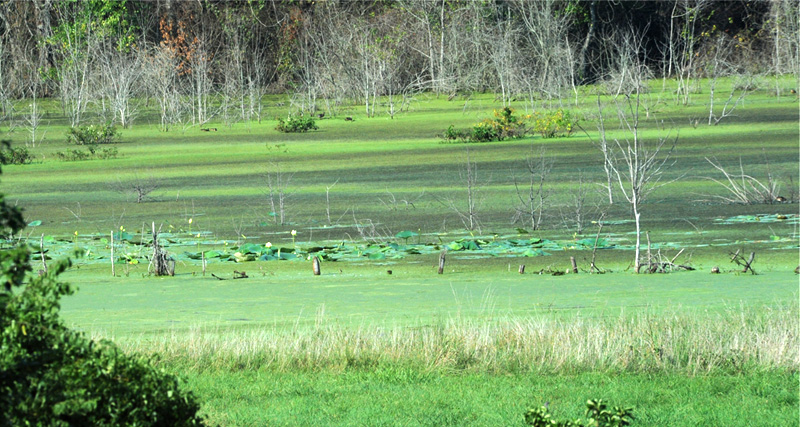
We made a trip to Wyndham Nashville soon after the reopening after the great flood of May 1-2, 2010. It involved 13.57 inches of rain in 36 hours. Review in the The Tennessean. We stopped by for a couple of nights in May of 2012 when things were just opening back up. This is the first time since and we were a bit surprised that the big cow pasture to the east of the resort is now a marsh. I presume that the great flood waters that covered the pasture had no path for drainage back to the river, so it remained a marsh. | 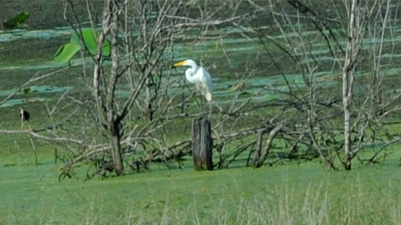 |
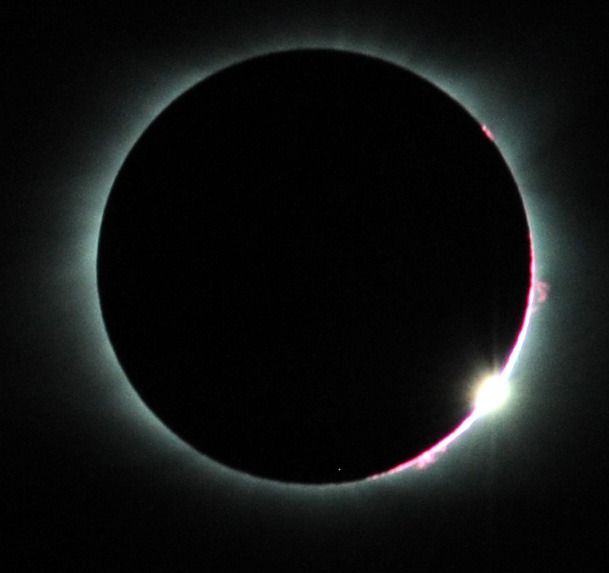 | Tuesday, August 21, was occupied with preparation for and viewing of the great eclipse. This is the beginning of the "diamond ring" effect of the first departure from the total eclipse condition. This shows the nature of the darkness at about 1:29:20 pm on the afternoon of an otherwise very bright day. |
Tuesday, August 22
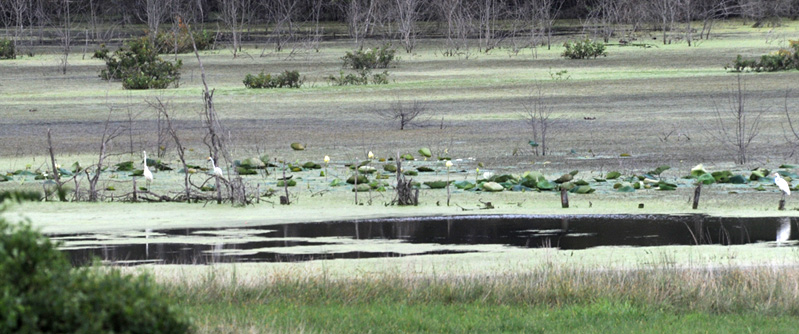

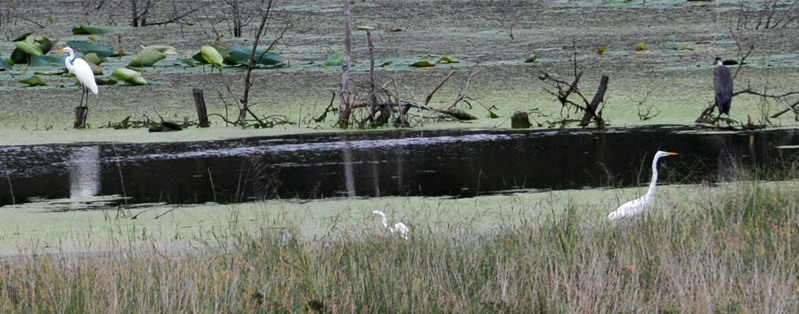

Wednesday, August 23

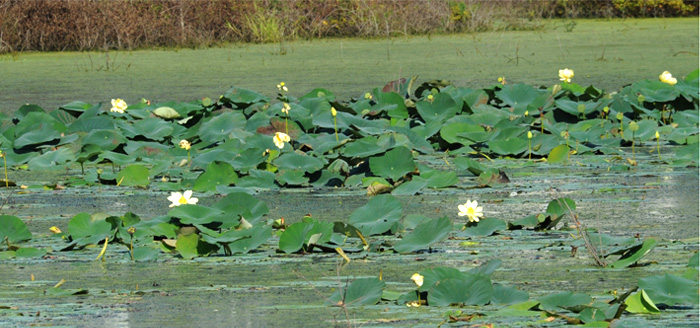 | From the hotel we got a better view of the lillies in the marsh. /td> |
We also got an attractive view of the Wyndham property across the lillies. |  |
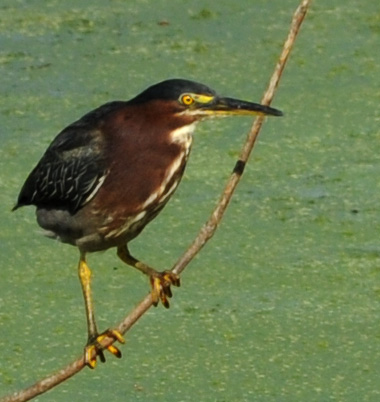 |  We got to see this brown water bird that I'll have to look up, and this red-eyed duck out in the woods in the green stuff. We had hoped to see white herons after the crowd of them last night, but their feeding areas must be elsewhere. |
We walked around, but couldn't get closer access to the marsh. We found five more of the red-eyed ducks in the watery woods. The one on the left looks like it might be nesting. | 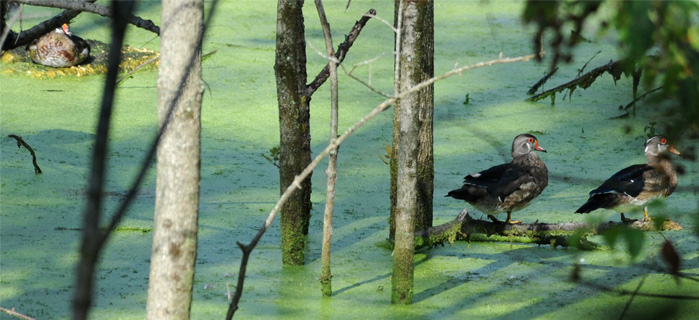 |

They lost a good cow pasture in the great flood, but had done a good job of getting lillies to grow in the resulting marsh, making it a thing of beauty rather than an eyesore.
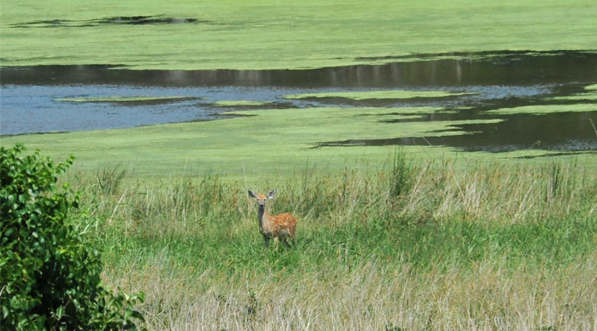 | The pasture wasn't completely gone, and it was attractive to what looks like a yearling faun since you can see the spots. Her mother was behind a bush. We couldn't figure out how they got there, but we appreciated the view. Wednesday, Aug 23. |

We were certainly appreciative of the abundance of white herons that were inhabiting the marsh. Since the flood that produced the marsh was in 2010, it was a bit surprising to me that there would be enough fish in the marsh to support this many herons - I counted a couple of dozen at roosting time. I was guessing that the marsh had produced an abundance of frogs and that this was what the herons were after. Thursday, Aug 24.
It was interesting to see this thin crescent moon in the west at about 7:45 pm. We had seen it in the eclipse at about 1:27pm three days ago. Since the condition for the total eclipse includes being at the new moon stage, it has progressed from zero to this size crescent in three days. Note that the same star is in place close to the moon, below and to the right, that I saw in the time of total eclipse. | 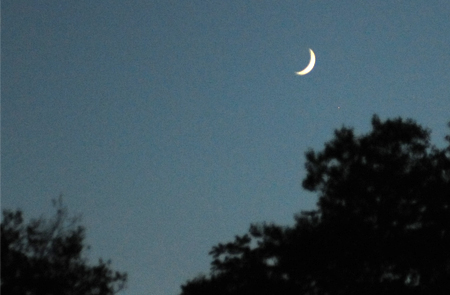 |
| Pearl River Trip |
2017